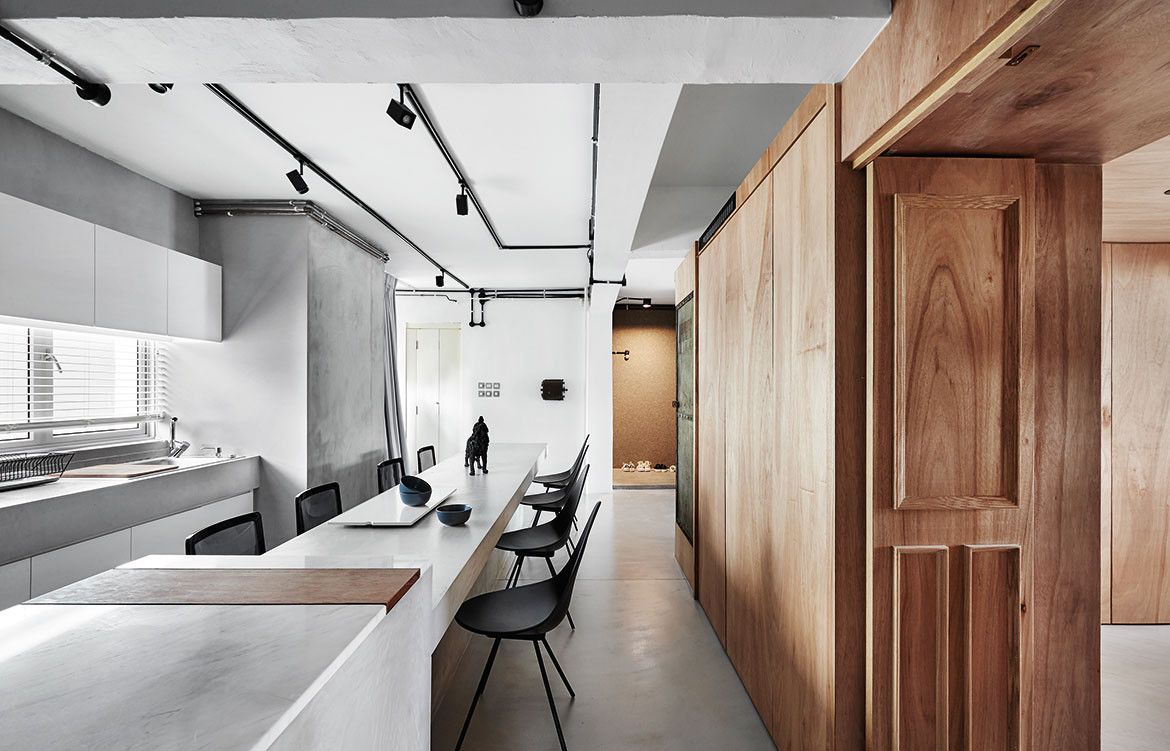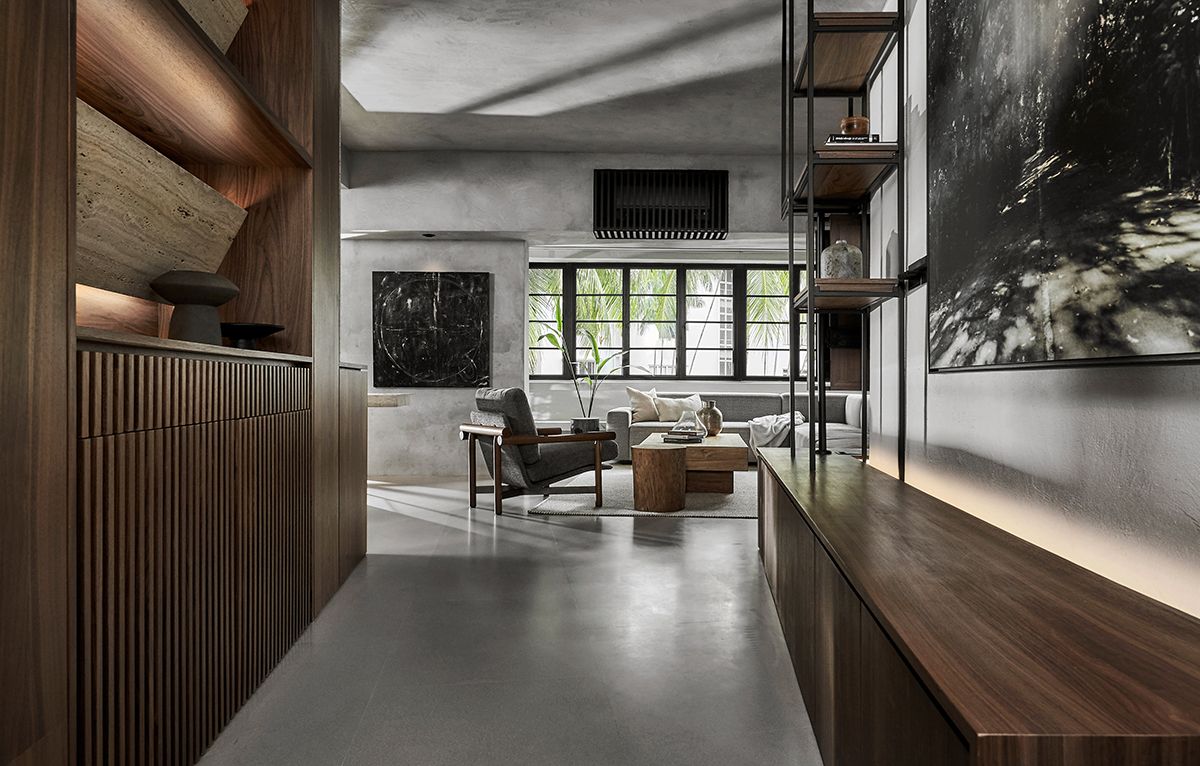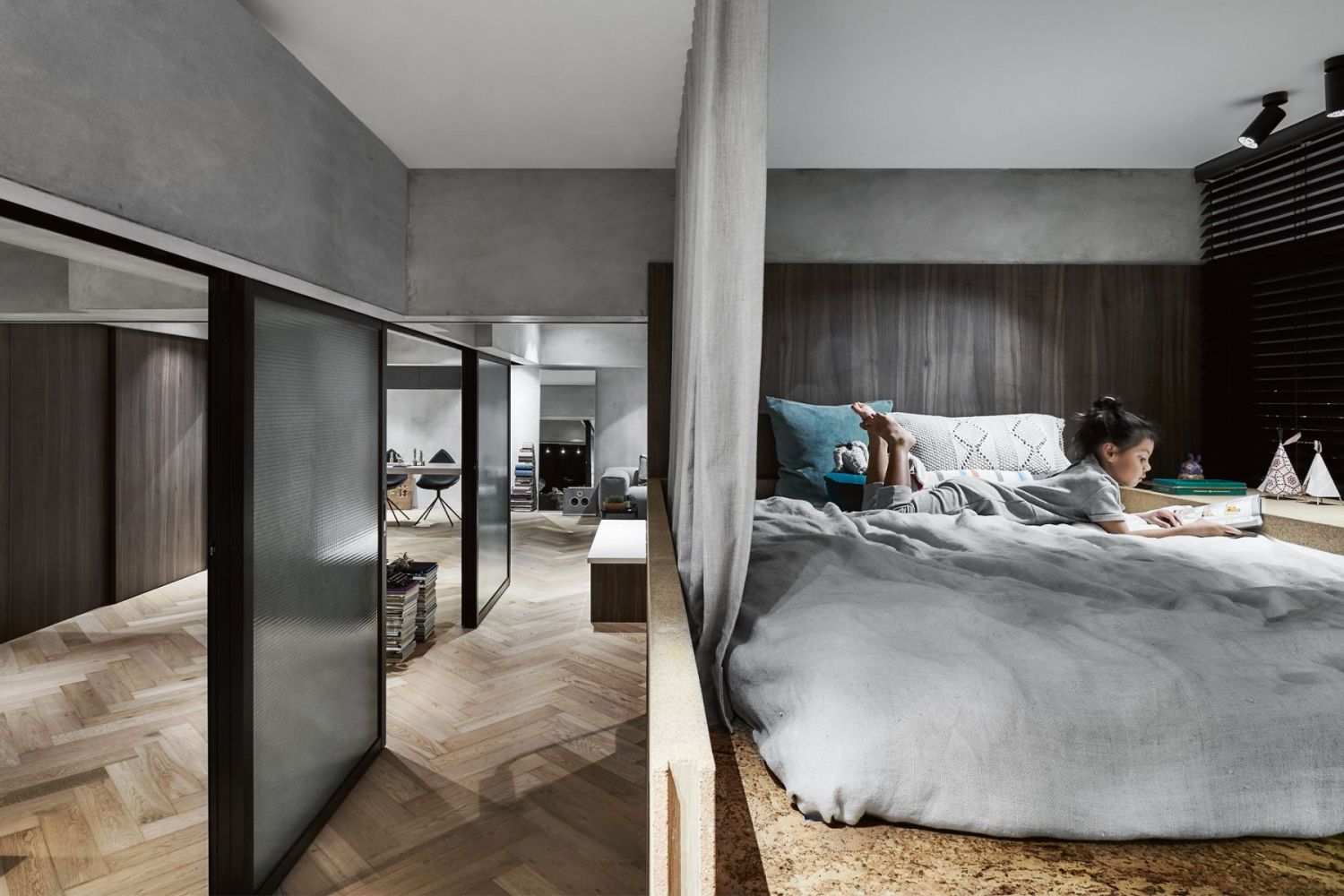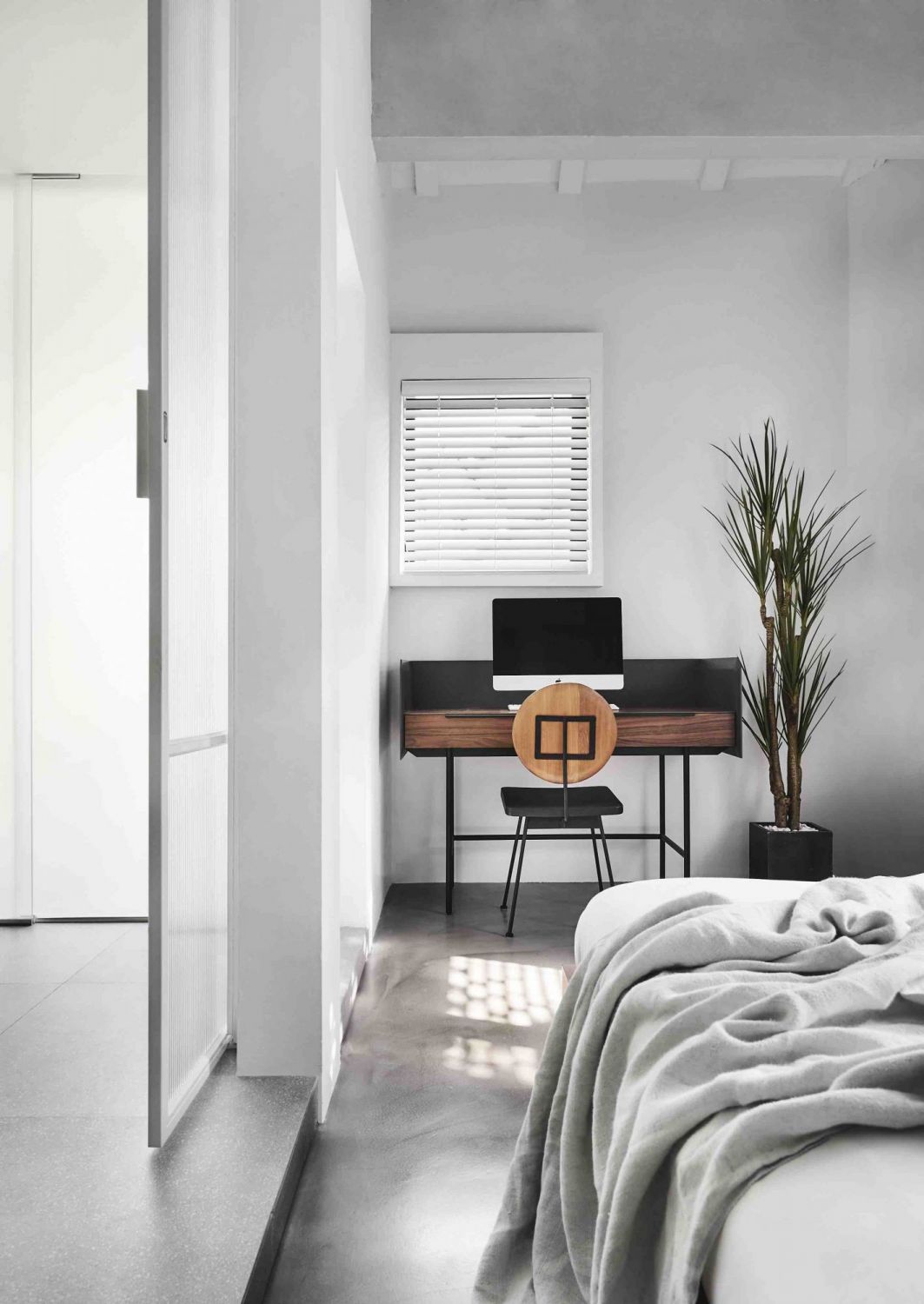Modern industrial style has a hard edge that’s not for everyone. Dennis Cheok of UPSTRS_ shares tips on how to embrace the style without sacrificing comfort or warmth
Raw, rugged and edgy, industrial-style interiors emanate character. Taking a cue from old factories and other industrial spaces, the design style is notable for using raw elements and materials such as exposed brick walls, weathered wood and metal beams in spades, creating a distinctive space brimming with personality.
“When it comes to defining the industrial style, I can only try to relate it to our firm’s approach—the appreciation of unapologetic honesty and the raw beauty of unembellished materials such as metals, brickwork, concrete, plaster and live wood,” says Dennis Cheok, founder and creative director of local design studio UPSTRS_. “We often use these materials in their raw state in our projects, and directly due to that, our work is often associated with being industrial.”
Don't miss: Home Tour: A Minimalist Apartment Designed In The Style Of A Modern Ryokan

But while industrial design was all the rage a few years back, its popularity has simmered down since. An industrial interior setting can easily be mistaken as rough and cold, and thus many homeowners have gravitated towards other design trends.
“I think that if we see it as a deep-seated appreciation for the ordinary and unfinished, and not so much as a ‘trend’, there is a lot of longevity to this as a material language,” Cheok shares his two cents.
Here, the designer divulges design tips for those looking to create an industrial-chic abode, or for those who’re looking to update their space with a modern edge.
In case you missed it: 5 Industrial Chic Homes in Malaysia





